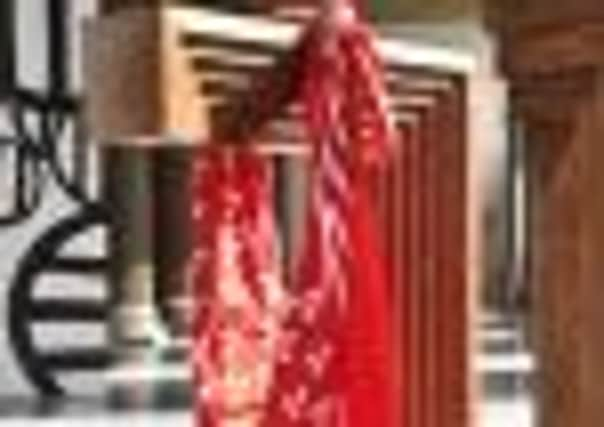Visual art review: You, Me, Something Else, Glasgow Gallery of Modern Art


As well as showcasing the work of individual artists, what GoMA is well placed to do is to bring together groups of artists in order to take something of an overview of what is going on in the city artistically. You, Me, Something Else is a careful attempt to do this.
Boldly, and perhaps wisely, it takes a step away from conceptual art, and concentrates instead on sculpture. The curators have chosen ten artists based in Glasgow, aged from mid-thirties to mid-forties, all of them concerned with making three-dimensional objects.
Advertisement
Hide AdAdvertisement
Hide AdSome would own the term “sculpture” and apply it to their work, others would not, but all are intensely aware of the medium’s history, whether they choose to interact with it or react against it. And there is a common aesthetic: although the work is made using a variety of different processes, it is always thorough, careful and highly finished. Few artists today seem comfortable with the word “skill”, yet there is no doubt that the work here is highly skilled.
The ground-floor gallery at GoMA is a tricky space and the show is not the easiest to navigate – the works are not labelled, so you need to match them to the pictures on the information sheet. Those pieces most successful in the space are those which deign to be cheeky, such as Andrew Miller’s totem pole of lampshades, and those which acknowledge the gallery’s grand pillars by nonchalantly leaning against them.
One such piece is Difficult Beneath by Claire Barclay, two wooden panels which look like gates or sections of fence, one leaning on a pillar, the other collapsed beside it, with fabric looping out of it and a few scattered feathers. It has an evocative sense of almost-narrative, as if we are looking at the aftermath of some kind of domestic breakdown the nature of which we can only guess at.
Karla Black’s sculpture is resonant in a very different way. Black is currently one of Glasgow’s hottest exports, with work in the British Art Show 7 and in the Scottish pavilion at the Venice Biennale. Don’t Adapt, Detach is a big pile of plastic sheeting, dotted with pastel-coloured polka-dots and smeared with deodorant, athlete’s foot spray, glitter eyeliner and hair gel. It lies there looking casual when it is in fact anything but, it is a rigorous investigation of materials and our attitudes to them.
With Dandelion Shift, Mary Redmond combines hard surfaces and textiles with a meticulous hand and a unifying palette of colours. But she is also interested in making objects seem to hover and fly, adding two acrylic rods wrapped in upholstery wools, suspended on barely visible threads.
Lorna Macintyre is another artist who combines hard surfaces and textiles, in A Tree of Night (Sculpture), a fine wooden frame draped with a piece of velvet. Apollo, on the other hand, looks like a study in balance and texture, focusing the attention on the suspended shining orb, like a mythical golden apple.
James McLardy’s work seems almost monumental – Born Male looks like a big flat block of solid marble with an equally solid marble cylinder resting on it, though when you read the blurb you learn it is painted MDF. An illusion, then, but a convincing one; somehow all the more monumental in this highly formal space. That, too, perhaps, is part of the game.
Advertisement
Hide AdAdvertisement
Hide AdAndrew Miller is enjoying himself too. You can take a horse to water but you can’t make him drink is a glass of water propped up against a wall by a pane of glass. It looks like an illusion, but it isn’t. He also suspends a table from the ceiling with one of its four legs cocked, and calls it Chandelier.
Joanne Tatham and Tom O’Sullivan are monumentalists too, in their fashion, though they typically resist any and all attempts to describe or categorise their work. The works here reference a series of pieces they placed amid the historic collection at Newhailes, an 18th-century house near Edinburgh. But, as the curators of this show were unable to borrow the Newhailes work, this is an assembly of signature pieces which “share a certain resemblance” with them, housed in a special construction made by the artists. The effect is interesting but confined. Without an obvious context to speak to, or fight with, they seem to speak largely to one another in a private language.
What does the show tell us about the art being made in Glasgow today? It is difficult to generalise, as one of the great defining characteristics of Glasgow’s artists is their diversity. But You, Me, Something Else picks out and examines a strand of work which could be overlooked if an exhibition like this didn’t put it under the microscope.
Rating: ****
• Until 18 March, 2012